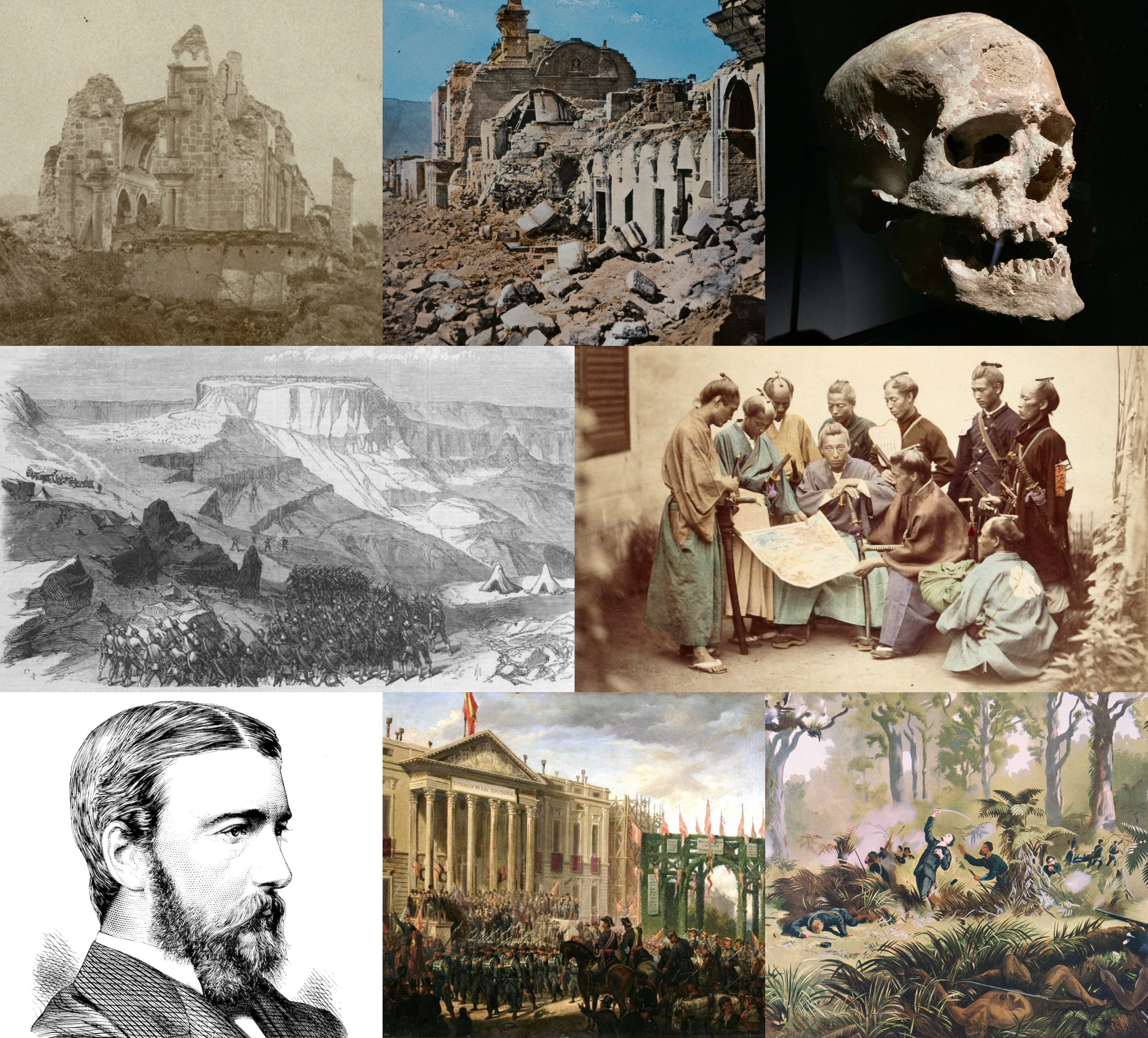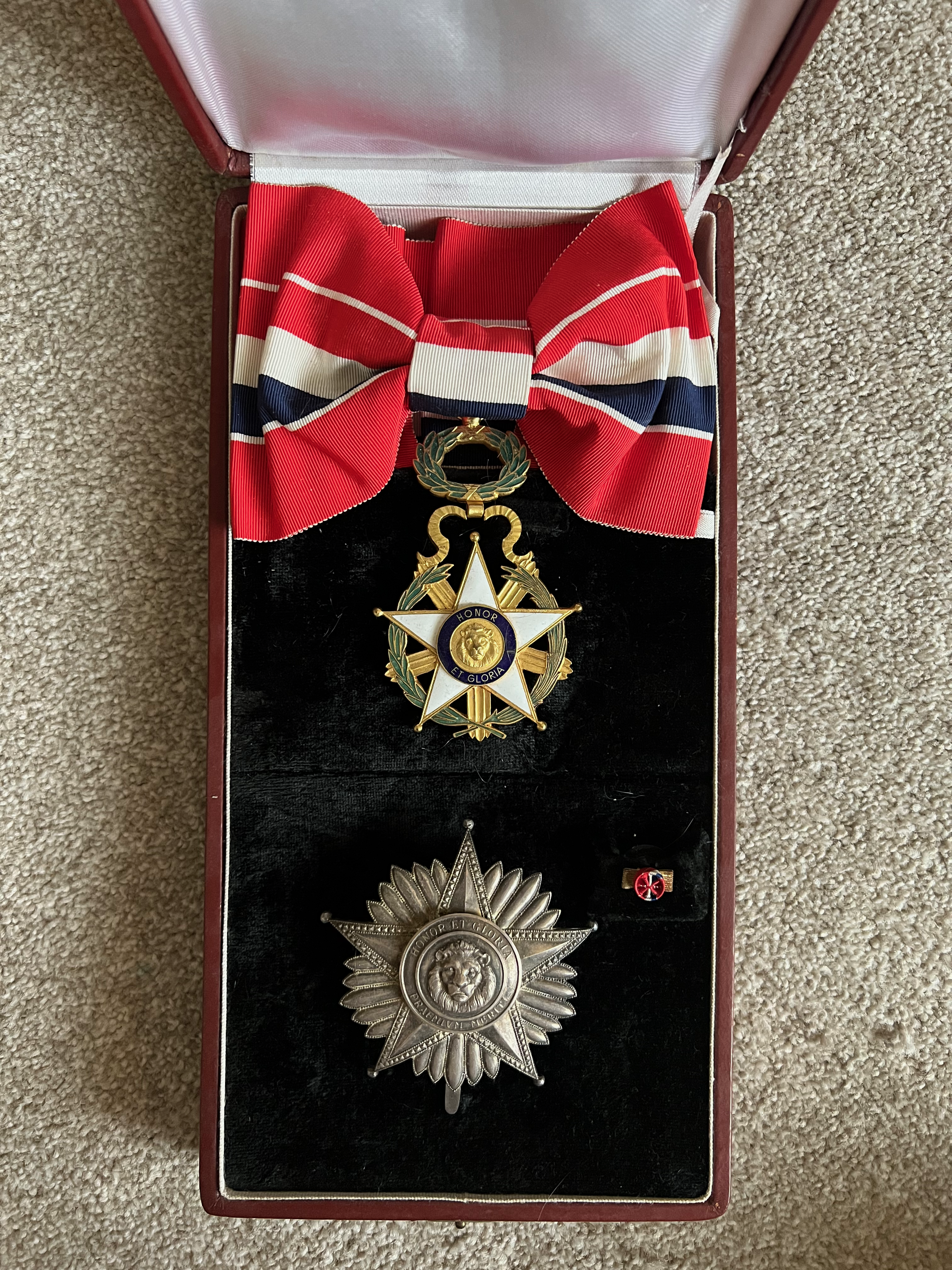|
José María Bruguez
José María Bruguez (1827-1868) was a Paraguayan general during the Paraguayan War. He was one of the most prominent Paraguayan generals of the war, being known for his artillery services during naval engagements of the war. He died during the 1868 San Fernando massacre after President Francisco Solano López accused Bruguez of conspiring against him. Early Military Career Bruguez was born on 1827 at Asunción. He enlisted in the Paraguayan Army in 1845 and was assigned within the artillery regiments. He was promoted to Lieutenant from 1852 to 1854 as he was in professional military classes taught by João Carlos de Villagran Cabrita and was reported to be his best student. He was in charge of the railway systems within Paraguay and promoted to Major along with being assigned to the chief of the Central Station on 1862. Paraguayan War Upon the outbreak of the Paraguayan War, Bruguez participated in the Capture of the steamer Marquês de Olinda, directly ramming his artillery ba ... [...More Info...] [...Related Items...] OR: [Wikipedia] [Google] [Baidu] |
Asunción
Asunción (, ) is the capital and the largest city of Paraguay. The city stands on the eastern bank of the Paraguay River, almost at the confluence of this river with the Pilcomayo River. The Paraguay River and the Bay of Asunción in the northwest separate the city from the Occidental Region of Paraguay and from Argentina in the south part of the city. The rest of the city is surrounded by the Central Department. Asunción is one of the oldest cities in South America and the List of oldest continuously inhabited cities#South America, longest continually inhabited area in the Río de la Plata Basin; for this reason it is known as "the Mother of Cities". From Asunción, Spanish colonization of the Americas, Spanish colonial expeditions departed to found other cities, including the second foundation of Buenos Aires, that of other important cities such as Villarrica, Paraguay, Villarrica, Corrientes, Santa Fe, Argentina, Santa Fe, Córdoba, Argentina, Córdoba, Santa Cruz de la Sie ... [...More Info...] [...Related Items...] OR: [Wikipedia] [Google] [Baidu] |
Pikysyry Campaign
The Pikysyry campaign was the Paraguayan War's fourth phase. It lasted from August 1868 to January 1869, and was a comprehensive Treaty of the Triple Alliance, allied victory. After success in the Mato Grosso campaign and failure in the Corrientes campaign, the Paraguayan Army was pushed back into Paraguay itself. After years of fighting around the formidable fortress of Humaitá, allied pressure around the fortress's defensive line forced it to be abandoned; a new, shorter, defensive line was set up around the Pikysyry river. The Paraguay river remained blocked by a new coastal battery in Angostura, but these were avoided by Brazilian troops, who marched through the Paraguayan Chaco and attacked the Paraguayan positions from the rear, seizing them. With the defeat of the Paraguayan army, Asunción, the capital, was occupied and Sacking of Asunción, sacked in January 1869. Over the following months, the war became an irregular conflict, as allied forces chased Paraguayan presiden ... [...More Info...] [...Related Items...] OR: [Wikipedia] [Google] [Baidu] |
Paraguayan Military Personnel Of The Paraguayan War
Paraguayans () are the citizens of Paraguay. Though the majority of Paraguayans reside in Paraguay, significant communities have been established in multiple countries, most noticeably Argentina, Spain, United States, Brazil. History The first inhabitants of Paraguay were the Guarani people. Racial and ethnic groups As in other Latin American countries, in Paraguay, from the onset of Spanish colonization and settlement, miscegenation or ''mestizaje'' was the norm rather than the exception. Paraguay has one of the most homogeneous populations in South America. About 75% of the people are mestizo (mixed Spanish and Guaraní Native American descent), 20% are Whites, and the rest are small minorities of Indigenous or Afro Paraguayan origin. European or white Indigenous While only a 1.7% of Paraguay's population is fully indigenous according to the 2012 national census, 75% of the population identifies as being partially of indigenous descent; Spanish, an Indo-European lan ... [...More Info...] [...Related Items...] OR: [Wikipedia] [Google] [Baidu] |
Military Personnel From Asunción
A military, also known collectively as armed forces, is a heavily armed, highly organized force primarily intended for warfare. Militaries are typically authorized and maintained by a sovereign state, with their members identifiable by a distinct military uniform. They may consist of one or more military branches such as an army, navy, air force, space force, marines, or coast guard. The main task of a military is usually defined as defence of their state and its interests against external armed threats. In broad usage, the terms "armed forces" and "military" are often synonymous, although in technical usage a distinction is sometimes made in which a country's armed forces may include other paramilitary forces such as armed police. Beyond warfare, the military may be employed in additional sanctioned and non-sanctioned functions within the state, including internal security threats, crowd control, promotion of political agendas, emergency services and reconstruction, prot ... [...More Info...] [...Related Items...] OR: [Wikipedia] [Google] [Baidu] |
1868 Deaths
Events January * January 2 – British Expedition to Abyssinia: Robert Napier leads an expedition to free captive British officials and missionaries. * January 3 – The 15-year-old Mutsuhito, Emperor Meiji of Japan, declares the ''Meiji Restoration'', his own restoration to full power, under the influence of supporters from the Chōshū and Satsuma Domains, and against the supporters of the Tokugawa shogunate, triggering the Boshin War. * January 5 – Paraguayan War: Brazilian Army commander Luís Alves de Lima e Silva, Duke of Caxias, enters Asunción, Paraguay's capital. Some days later he declares the war is over. Nevertheless, Francisco Solano López, Paraguay's president, prepares guerrillas to fight in the countryside. * January 7 – The Arkansas constitutional convention meets in Little Rock. * January 9 – Penal transportation from Britain to Australia ends, with arrival of the convict ship ''Hougoumont'' in Western Australia, after a ... [...More Info...] [...Related Items...] OR: [Wikipedia] [Google] [Baidu] |
1827 Births
Events January–March * January 5 – The first regatta in Australia is held, taking place in Tasmania (called at the time ''Van Diemen's Land''), on the River Derwent at Hobart. * January 15 – Furman University, founded in 1826, begins its first classes with 10 students, as the Furman Academy and Theological Institution, located in Edgefield, South Carolina. By the end of 2016, it will have 2,800 students at its main campus in Greenville, South Carolina. * January 27 – Author Johann Wolfgang von Goethe first elaborates on his vision of '' Weltliteratur'' (world literature), in a letter to Johann Peter Eckermann, declaring his belief that "poetry is the universal possession of mankind", and that "the epoch of world literature is at hand, and each must work to hasten its coming." * January 30 – The first public theatre in Norway, the Christiania Offentlige Theater, is inaugurated in Christiania (modern-day Oslo). * January – In Laos, King Anouvong of Vien ... [...More Info...] [...Related Items...] OR: [Wikipedia] [Google] [Baidu] |
General José María Bruguez
General José María Bruguez is a district in the department of Presidente Hayes, Paraguay Paraguay, officially the Republic of Paraguay, is a landlocked country in South America. It is bordered by Argentina to the Argentina–Paraguay border, south and southwest, Brazil to the Brazil–Paraguay border, east and northeast, and Boli .... Climate References {{coord, 24, 45, S, 58, 49, W, display=title, region:PY_type:city_source:GNS-enwiki Populated places in the Presidente Hayes Department ... [...More Info...] [...Related Items...] OR: [Wikipedia] [Google] [Baidu] |
Battle Of Purutué Bank
The Battle of Purutué Bank (also called Redemption Island, Itapirú Bank, Carayá Island, Carvalho Island, Cabrita Island or Vitória Island) took place on 10 April 1866, during the Paraguayan War. Preparation Almost in the middle of the Paraná River, bordering the , there was an island - in fact a sand bank - covered by vast grassland, which would later be called ''Ilha da Redenção'', ''Ilha de Carvalho'' or ''Ilha do Cabrita''. The Imperial Brazilian Army The Imperial Brazilian Army ( Portuguese: Exército Imperial Brasileiro) was the name given to the land force of the Empire of Brazil. The Brazilian Army was formed after the independence of the country from Portugal in 1822 and reformed in 1889, ... decided to occupy the island, important for its position in relation to the fort and the enemy camp, to serve as a point of support against the Paraguayans. On 5 April 1866, lieutenant colonel of engineers José Carlos de Carvalho was ordered to ship a 12-inch ''La Hitte ... [...More Info...] [...Related Items...] OR: [Wikipedia] [Google] [Baidu] |
Paraná River
The Paraná River ( ; ; ) is a river in south-central South America, running through Brazil, Paraguay, and Argentina for some ."Parana River". Encyclopædia Britannica. Encyclopædia Britannica Online. Encyclopædia Britannica Inc., 2012. Web. 26 May. 2012 https://www.britannica.com/EBchecked/topic/443063/Parana-River . "Rio de la Plata". Encyclopædia Britannica. Encyclopædia Britannica Online. Encyclopædia Britannica Inc., 2012. Web. 26 May. 2012 https://www.britannica.com/EBchecked/topic/463804/Rio-de-la-Plata Among South American rivers, it is second in length only to the Amazon River. It merges with the Paraguay River and then farther downstream with the Uruguay River to form the Río de la Plata and empties into the Atlantic Ocean. The first European to go up the Paraná River was the Venetian explorer Sebastian Cabot (explorer), Sebastian Cabot, in 1526, while working for Spain. A drought hit the river in 2021, causing a 77-year low. Etymology In eastern South Amer ... [...More Info...] [...Related Items...] OR: [Wikipedia] [Google] [Baidu] |
National Order Of Merit (Paraguay)
The National Order of Merit (Spanish: ''Orden Nacional del Mérito'') of Paraguay is an award given by the government of Paraguay. The award was first established in 1865 and can be given to any person or organization that has contributed in some way to the benefit of Paraguay. It is the highest distinction awarded by the Republic of Paraguay. The President of the Republic of Paraguay holds as a lifetime honour (unless removed by impeachment) the Grand Cross of the Order, known as Presidential Collar (or Cordon) of Marshal López. About The National Order of Merit is given to a person or an organization who has contributed to the benefit of Paraguay in various fields of endeavor. This can include through culture, leadership, and science, among others. The medal was designed as a five-pointed star with the words "''honor et gloria''" on the front and "''premium meriti''" on the reverse. History The National Order of Merit was established on April 8, 1865 by Francisco Solano ... [...More Info...] [...Related Items...] OR: [Wikipedia] [Google] [Baidu] |
Imperial Brazilian Navy
The Imperial Brazilian Navy (Brazilian Portuguese: ''Armada Nacional'', commonly known as ''Armada Imperial'') was the navy created at the time of the independence of the Empire of Brazil from the United Kingdom of Portugal, Brazil and the Algarves. It existed between 1822 and 1889 during the vacancy of the constitutional monarchy. The Navy was formed almost entirely by ships, staff, organizations and doctrines proceeding from the transference of the Portuguese Royal Family in 1808. Some of its members were native-born Brazilians, who under Portugal had been forbidden to serve. Other members were Portuguese who adhered to the cause of separation and German and Irish mercenaries. Some establishments created by King John VI were used and incorporated. Under the reign of Emperor Pedro II the Navy was greatly expanded to become the fifth most powerful navy in the world and the armed force more popular and loyal to the Brazilian monarchy. Creation The Imperial Navy came into bei ... [...More Info...] [...Related Items...] OR: [Wikipedia] [Google] [Baidu] |





